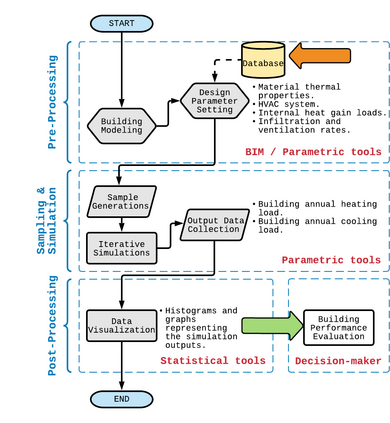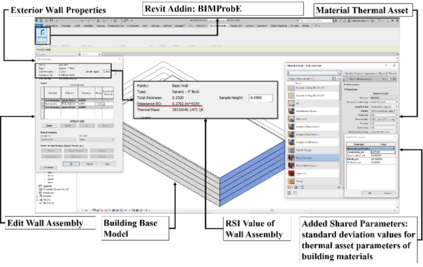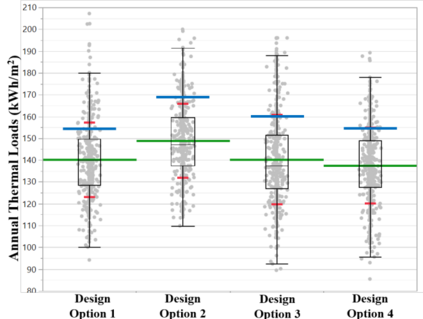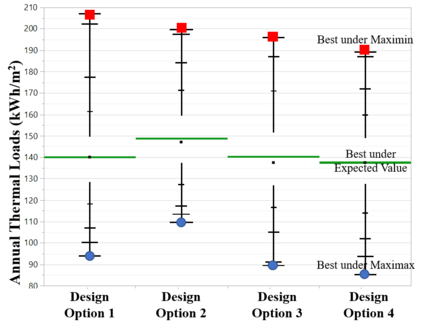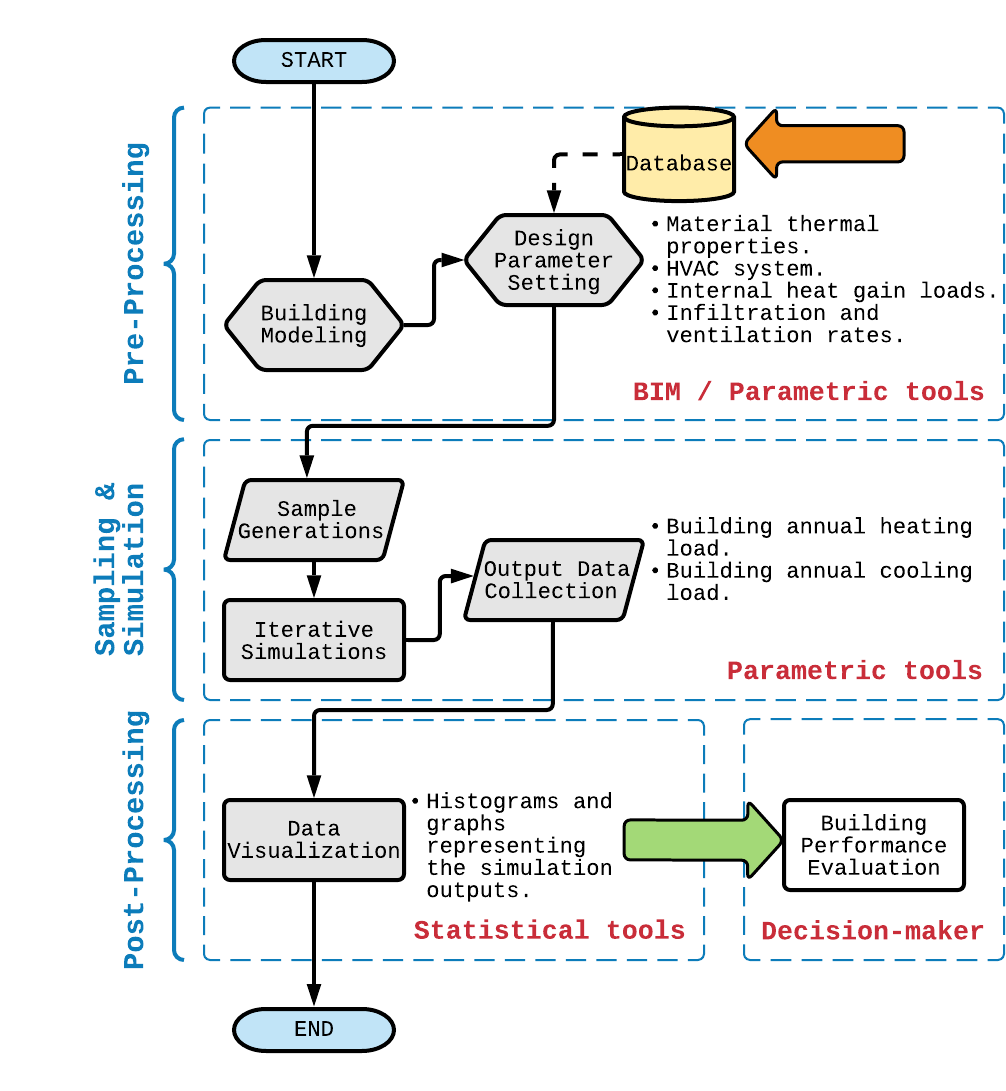A growing demand for handling uncertainties and risks in performance-driven building design decision-making has challenged conventional design methods. Thus, researchers in this field lean towards viable alternatives to using deterministic design methods, e.g., probabilistic methods. This research addresses the challenges associated with conventional methods of performance-driven building design, i.e., ignoring the existing uncertainties and lacking a systematic framework to incorporate risk assessment in building performance analysis. This research introduces a framework (BIMProbE) to integrate BIM-based parametric tools with building probabilistic performance analysis to facilitate uncertainty analysis and risk assessment in performance-based building design decision-making. A hypothetical building design scenario is used to demonstrate the application of the proposed framework. The results show that the probabilistic method leads to a different performance ranking order than the deterministic method. Also, the probabilistic method allows evaluating design options based on different risk attitudes.
翻译:因此,该领域的研究人员倾向于采用可行的替代方法,而不是使用确定性设计方法,例如概率法;这项研究处理与以业绩为驱动的建筑设计的传统方法有关的挑战,即忽视现有的不确定性,缺乏一个系统框架,将风险评估纳入建筑绩效分析;这项研究提出了一个框架(BIMProbE),将基于BIM的参数工具与基于BIM的概率性绩效分析结合起来,以便利在基于业绩的建筑设计决策中进行不确定性分析和风险评估;利用假设性建筑设计设想来展示拟议框架的应用;结果显示,概率法导致业绩排序顺序不同于确定性方法;此外,根据不同风险态度评价设计选项,概率法也允许根据不同风险态度评价设计选项。

